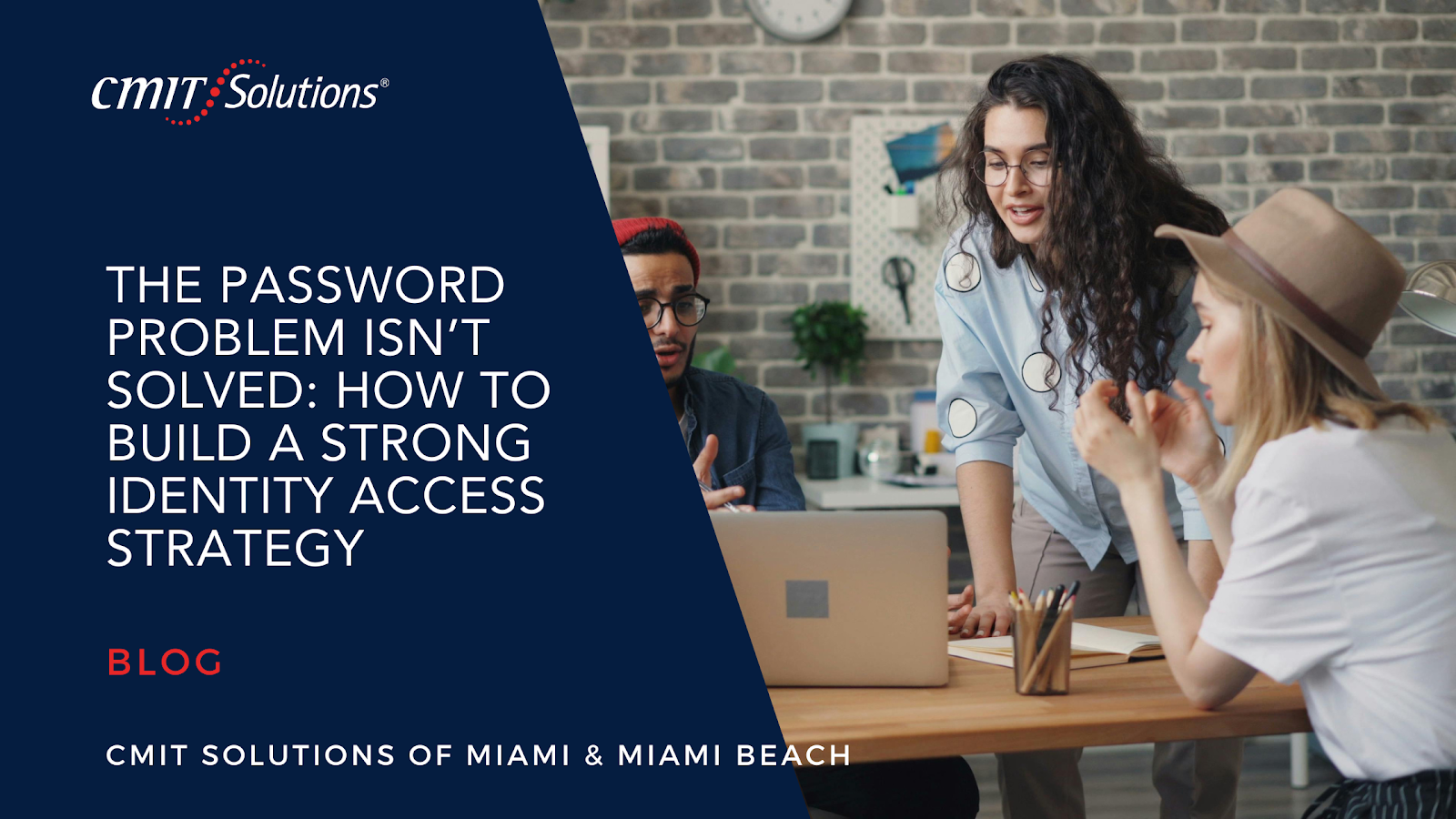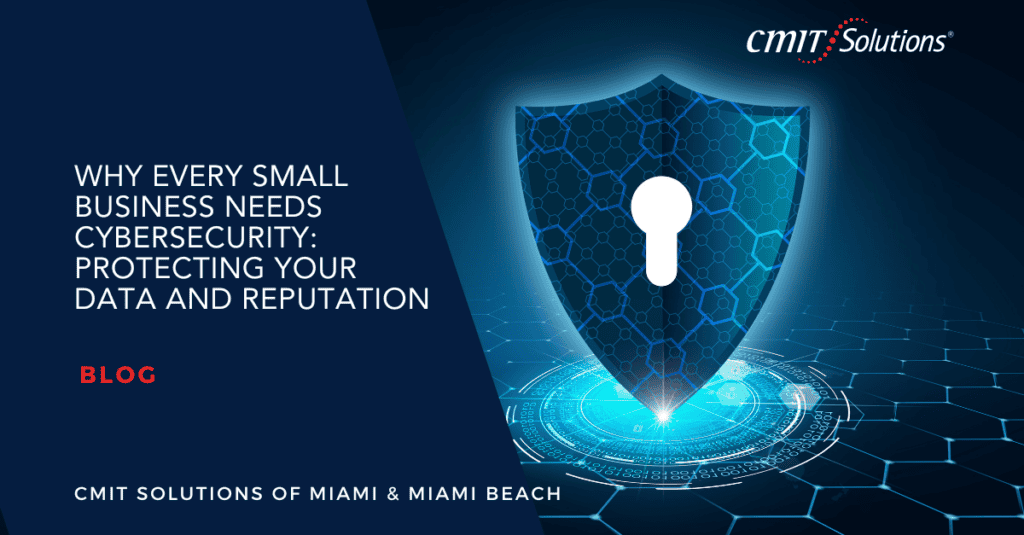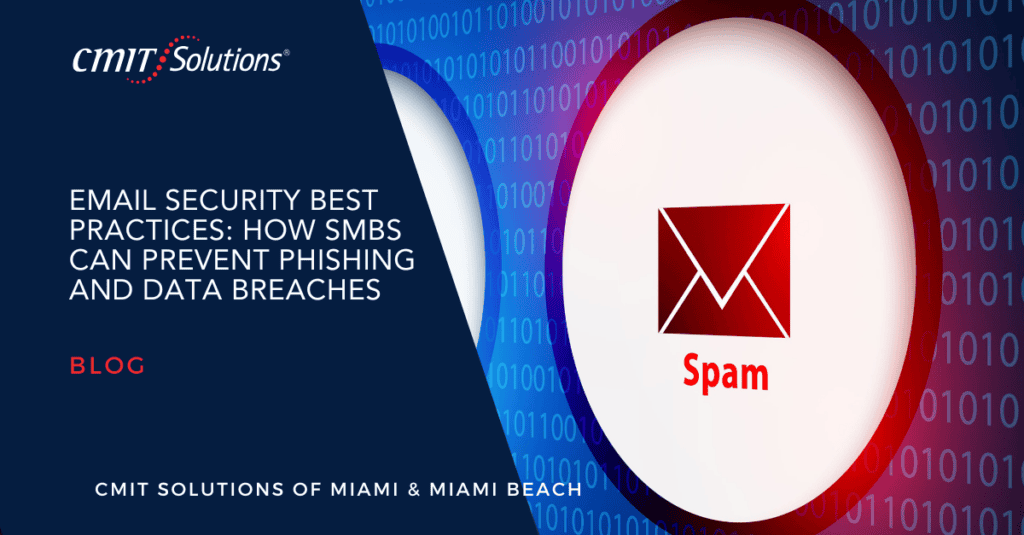Introduction: Passwords Alone Aren’t Enough
Passwords were once the bedrock of digital security, but in 2025, they are often the weakest link. Despite increasing cybersecurity awareness, password-based breaches continue to climb. For small and medium-sized businesses (SMBs), especially in tech-savvy yet threat-prone regions like Miami, the stakes are even higher. CMIT Solutions of Miami understands these evolving threats and is committed to helping local businesses adopt stronger identity access strategies.
An effective identity access strategy (IAS) transcends passwords. It involves layered authentication, access control, and ongoing monitoring. In this blog, we will unpack the weaknesses of passwords, why identity access management (IAM) matters, and how businesses can build resilient, future-ready frameworks.
The Flawed Foundation: Why Passwords Fail
Passwords are often reused, easy to guess, or stored insecurely. A 2024 cybersecurity report showed that over 60% of SMB data breaches involved stolen or weak credentials. That means passwords are no longer sufficient as a single line of defense.
Employees often default to simple passwords because of cognitive overload. Even when password managers are used, they remain vulnerable to phishing attacks and malware. These limitations are highlighted in our insights on cyber threats.
To make matters worse, attackers have become smarter. They use AI-driven credential stuffing and phishing tactics that bypass even moderately strong credentials.
Multi-Factor Authentication: The First Step Beyond Passwords
Implementing multi-factor authentication (MFA) is a critical first step. MFA combines something you know (like a password), something you have (a device), and something you are (biometric). It drastically reduces the chances of unauthorized access.
Businesses that adopted MFA report 90% fewer credential-based breaches. But implementation must be comprehensive. A fragmented MFA system can frustrate employees and lead to shadow IT practices. We previously discussed how proactive IT strategies help in our post on IT maintenance.
Identity Governance: Defining Access Rights Intelligently
Beyond authentication, the next layer is identity governance. This involves defining who gets access to what, and why. Just because an employee is trusted doesn’t mean they need access to all company resources.
Start by applying the principle of least privilege. This ensures users have only the access necessary for their roles. Automation tools can provision and deprovision access as roles evolve. Effective identity governance is critical for maintaining compliance standards, particularly in regulated sectors like healthcare and finance. Learn more about simplifying regulations in our blog on compliance.
Single Sign-On: Efficiency Without Sacrificing Security
Single Sign-On (SSO) allows employees to log in once and gain access to multiple applications securely. This not only improves user experience but also reduces helpdesk ticket volumes related to password resets.
Pairing SSO with MFA and centralized access controls enhances both security and efficiency. It’s a best practice for modern businesses that use cloud-based solutions. See how cloud services complement identity management in our article on cloud strategy.
Endpoint Security: Protecting the Edges
With hybrid work environments becoming the norm, employees are logging in from multiple endpoints—laptops, phones, and even personal devices. Endpoint detection and response (EDR) tools ensure these endpoints are monitored and secured.
EDR flags suspicious activity and enables swift responses to potential breaches. By integrating endpoint protection with IAM systems, businesses create a robust perimeter defense. We further elaborate on this in our blog on advanced endpoint solutions.
Behavioral Analytics: Monitor, Learn, Respond
A sophisticated identity access strategy includes behavioral analytics. These systems analyze user behaviors to establish a baseline. If a user deviates from their normal pattern, the system flags or blocks the session.
This is particularly important in spotting insider threats or compromised credentials. Behavioral analytics adds an adaptive security layer that evolves with your workforce.
Pair this approach with SIEM tools to gather logs and correlate data across platforms. Our breakdown of SIEM solutions explains how they improve threat detection.
Passwordless Future: Is It Time?
Forward-thinking companies are embracing passwordless authentication using biometrics, smartcards, and authentication apps. These methods offer higher security while improving user experience.
While not universally applicable yet, passwordless systems reduce phishing risks dramatically. Combined with mobile device management (MDM) tools, they simplify authentication for field staff and remote workers. Learn how Microsoft Intune supports this in our guide on Intune MDM.
Disaster Planning: Building Resilience Into Identity Access
No system is foolproof. That’s why businesses need an incident response plan linked directly to their IAM setup. Who is alerted when an anomaly occurs? What systems get locked down?
Your identity strategy should plug into your broader disaster recovery planning. This ensures continuity even in the event of a breach. We cover this integration thoroughly in our post on disaster recovery.
Employee Training: The Human Firewall
Even the most secure system is only as strong as its users. Regular security training ensures employees recognize phishing attempts, use secure devices, and report suspicious activity.
Many breaches start with human error. Cultivating a security-first culture is essential. We emphasize this in our training-focused blog on cybersecurity education.
I AM for Business Growth
A secure identity access system doesn’t just prevent breaches. It also supports business growth by enabling faster onboarding, safer remote access, and efficient scaling.
As businesses evolve from startups to scale-ups, IAM strategies must grow accordingly. Our blog on IT support growth details how IT infrastructure—including IAM—plays a pivotal role.
Conclusion: Future-Proofing with Identity Access Strategy
Passwords alone are no longer enough. In today’s threat landscape, small businesses in Miami must evolve their cybersecurity approach. A strong identity access strategy includes multi-factor authentication, behavioral analytics, endpoint security, identity governance, and user education.
CMIT Solutions of Miami specializes in helping local businesses build these systems from the ground up. By investing in a robust IAM strategy today, you safeguard your operations, reputation, and future.
Ready to strengthen your identity access framework? Partner with CMIT Solutions of Miami to design and implement a strategy tailored to your needs.






